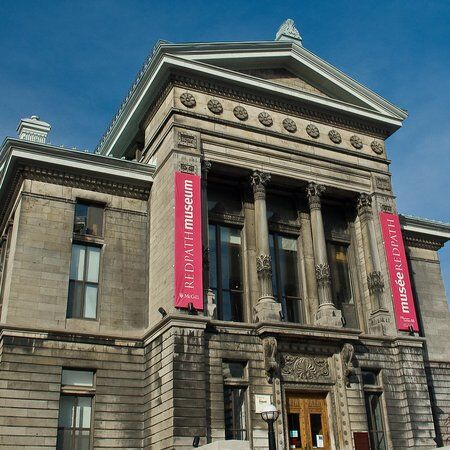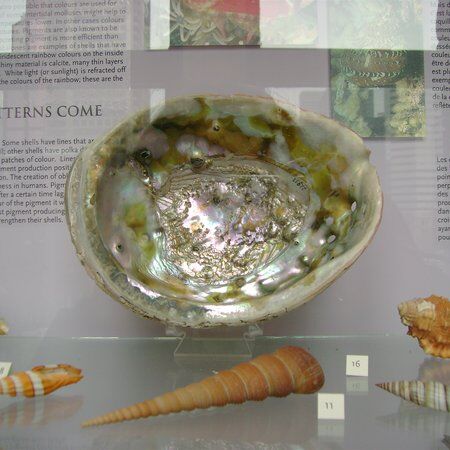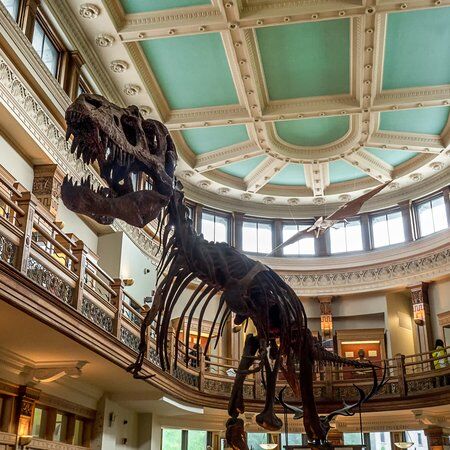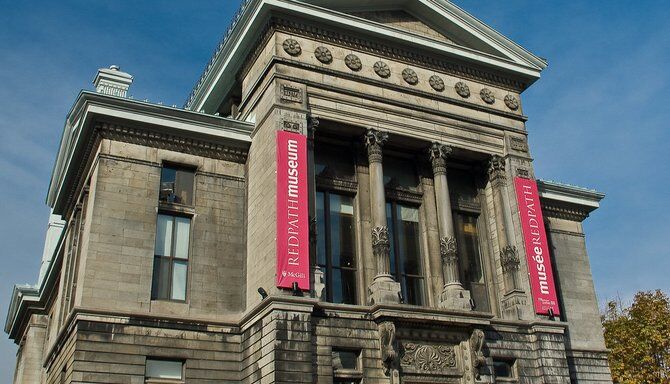Discover the Redpath Museum
“Research projects at the Museum focus on evolution, whether it's detailing some 3.5 billion years of life on the planet or examining how creatures and systems are changing today.”
The Redpath Museum, located on the grounds of the McGill University in Montreal, Quebec, serves as a bridge between the city's bustling present and its ancient natural history. The museum was founded in 1882 and is considered the oldest in Canada. As a remarkable institution, steeped in tradition, it is home to a vast collection of objects divided into four broad groups: mineralogy, palaeontology, zoology, and ethnology. For almost 80,000 visitors per year, it is a treasure trove of knowledge and a testament to the human thirst for understanding the world around us, all piled into one stand-alone building. A magnificent expression of Greek Revival Style that has earned it a place as the backdrop for multiple TV productions and motion pictures.
The Redpath Museum: A Legacy of Learning
The building itself came to life through the generous endowment of, and thus is named after, the sugar baron and philanthropist Peter Redpath. But it was built by Canada's foremost Victorian naturalist, and the then Principal of McGill, Sir John William Dawson to house his impressive scientific collections. Today, the collection has grown to include some 3 million objects.
Ultimately, it was created to inspire curiosity, advance scientific knowledge of the university students, and serve as an educational resource for the wider scientific community. For example, much of the collections and objects are loaned out for research purposes to students and other research facilities around Canada and the US.

Architectural Grandeur of the Redpath Museum
The museum's physical presence is itself a sight to behold and serves as a fitting prelude to the treasures that lie within. Set on the leafy Canadian campus its imposing red sandstone exterior, was designed by Alexander Denton Steele and Alexander Cowper Hutchison of the architectural firm. Adorned with intricate carvings and ornate Grecian details, including Corinthian-inspired columns and a raised portico, the Redpath exudes an aura of timeless elegance. Despite having disproportionately Greek accents, the Redpath Museum actually reflects a range of architectural styles that blend with the uniformly designed university buildings surrounding it. It has been praised for its Victorian and more modern characteristics and is the first building in Canada to receive international acclaim for its design.
Exploring the Redpath Museum
Stepping through the museum’s doors provides access to a remarkable collection of over 3 million artefacts that span the geological epochs, from ancient fossils spilling prehistoric secrets to intricate minerals that sparkle in crystalline beauty. The museum's ethnographic treasures are equally captivating, offering a glimpse into the rich tapestry of human cultures from around the world. From mummies and masks to intricate textiles and tribal art, the Redpath Museum serves as a captivating nexus of scientific inquiry and cultural exploration, inviting visitors to traverse the avenues of natural history through time and across continents.
Each of these captivating items are categorised into four themes: Palaeontology, Mineralogy, Biodiversity, and World Cultures. And they are all represented by a selection of artefacts in four exhibit cases in the museum’s lecture hall.

Palaeontology Collection
A large proportion of the Redpath Museum’s incredible collection – second only to the mineral artefacts – is Palaeontological material. The well-preserved specimens from both of these areas are represented with such detail at Redpath because they were Dawson’s specialties. Furthermore a large majority of the specimens were collected by Dawson himself, including the oldest known reptile fossil to be discovered. Perhaps the most impressive artefact in the collection is the complete skeleton of a Gorgosaurus libratus dinosaur, featured in the museum’s central gallery.

Mineralogy Collection
In addition to its dinosaur collection, the Redpath Museum has amassed an extensive array of minerals, extraterrestrial rocks, and geological specimens since its opening. Today over 20,000 items from around the world and throughout Canada offer a unique opportunity for visitors to explore the geological processes that have shaped the Earth over millions of years. Furthermore, the naming of certain mineral matter such as Dawsonite and McGillite testifies to the roles Sir Dawson and McGill university has played in important mineral research.
There are exhibits titled ‘Mineralogy Garden’, which contains gems like ammonite, and ‘Back to the Sea’ where visitors can expect information about the types of animals that over millions of years have lived in water, on land, and in water again. And if that wasn’t enough to hook you – come for the Japanese Sea Crab. As the world’s largest crab, with a leg span of almost 12 feet wide, the Macrocheira kaempferi is a sight to behold!
Cultural Treasures
Beyond its natural history collections, the Redpath Museum also houses a rich assortment of around 17,000 cultural artefacts from Africa, Asia, the Middle East, Mediterranean, Oceana, and Americas. The World Cultures Gallery was designed by McGill’s curators to celebrate humanity’s cultural diversity. From ancient Egyptian mummies to Indigenous art and ethnographic objects, the museum offers a multifaceted exploration of human history and creativity.
Our Thoughts…
For those visiting Toronto or Montreal, the Redpath Museum is a cultural and educational gem that should not be missed. Whether you're a seasoned naturalist, a history enthusiast, or simply someone seeking a sense of wonder and discovery, the Redpath Museum offers a captivating and enriching experience.
As you explore the museum's galleries, contemplate the mysteries of the universe, and stand in awe of the Earth's ancient past, you'll come to appreciate the enduring value of institutions like the Redpath Museum – places where curiosity is nurtured, knowledge is celebrated, and the beauty of the natural world is on full display.
Want to learn more about Toronto and see some of it's secret & hidden sights? Check out our Toronto Scavenger Hunts, puzzle-filled urban adventures lead you through city highlights and best-kept secrets.



